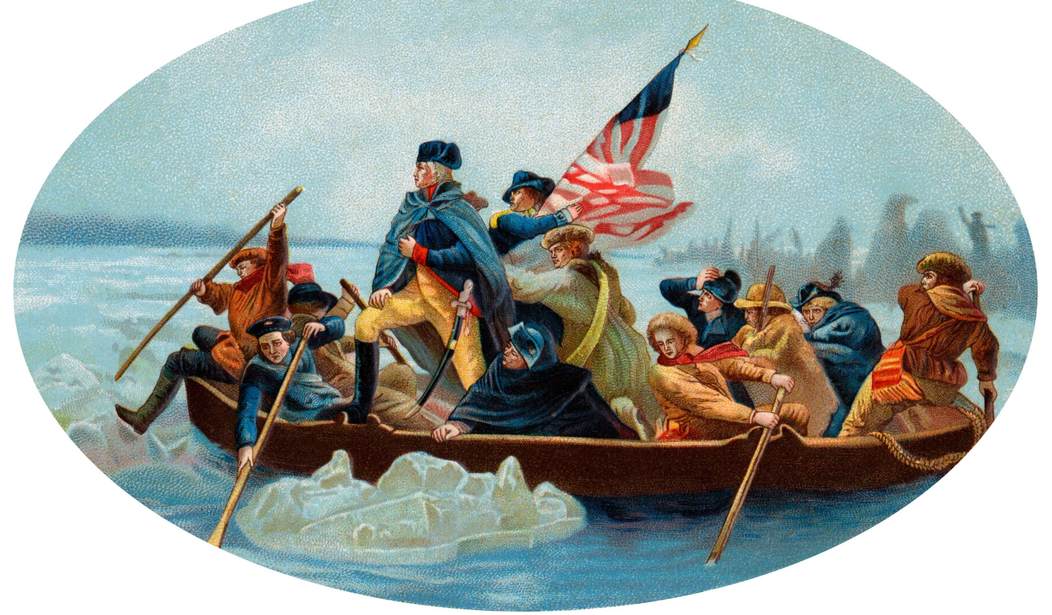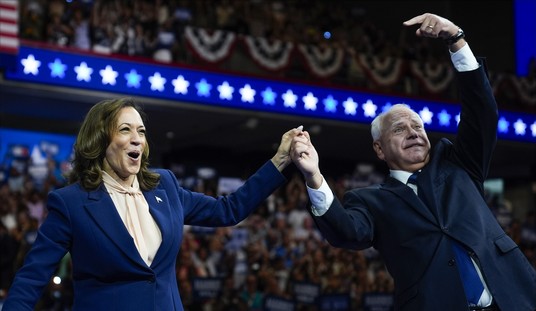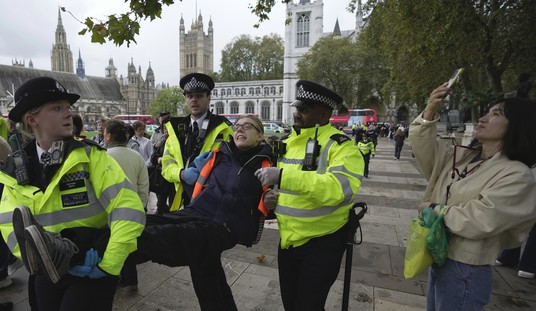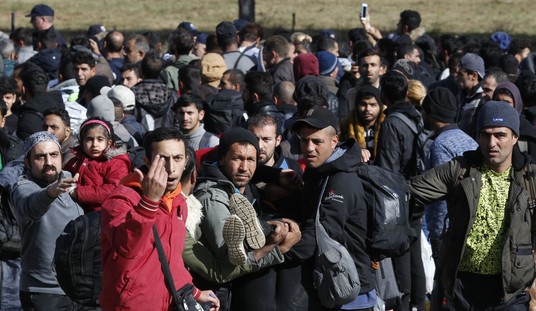I wanted to be an astronaut. I was never interested in Superman or Spiderman when I was a kid. They were not real; I wanted real heroes to imitate, like Neil Armstrong. When the Apollo astronauts blasted off I sat in my little chair and imitated every move and sound that came from them. On July 16, 1969, I pretended I was Neil Armstrong, Buzz Aldrin, and Michael Collins as they blasted off for the moon. I went through every move and said everything they said. I saw them as brave and strong and smart and courageous men who accomplished incredible things — like flying to the moon and back! I wanted to be just like them.
When my wife and I had little children in the home (they’re all grown up now), we made it a point to teach them about real people who went through many of the same problems we have, yet endured and overcame their problems, or died bravely. Real heroes inspire us; they calm our fears and give us hope. If they overcame, we know we can too.
Here are twelve heroes from American history I pulled out of our “memory banks” that we used to inspire and teach our kids. I’m sure you can add quite a few of your own (I probably left out many of your favorites; my apologies).
1. George Washington.
Of course! Plenty of people talk a good game, but few people actually go out and do what needs to be done. Washington’s family motto was: “Deeds, not words.” Indeed he was a man of few words (he hated giving speeches but could certainly write eloquently), but he actually went out onto the field of battle and achieved victory and liberty for the United States.
Often he would personally lead his men in an attack and expose himself to enemy fire. He was not a military genius as some would count geniuses, but he was tenacious — and that is what I wanted my kids to learn. He did not have a college degree, but basically educated himself and could hold his own in the same room with such luminaries as John Adams, Thomas Jefferson, and James Madison.
I could go on and on about Washington (vices as well as virtues, and I taught my kids about his faults too), but the best scene in his life was after the war, when he resigned his commission as the head of the Continental Army. I taught my kids that, like a modern-day Cincinattus (the Roman farmer who defended Rome but then went back to his farm after the war), George Washington gave up the opportunity to be a king, so that a free government could have a chance. He was not absorbed with power or his own self-importance. That is true humility. ‘Wish more in government today had his attitude.
2. Richard Allen.

Image via Wikimedia Commons, from the frontispiece of History of the African Methodist Episcopal Church (1891) by Daniel A. Payne. Public domain.
Richard Allen was born a slave in Delaware in colonial America. His master, Stokely Sturgis, heard the gospel from a traveling Methodist preacher (Freeborn Garretson) and converted to the Christian faith. He was convicted in his heart that holding slaves was wrong, so he told Allen and his siblings that he would free them. Richard Allen worked for the Continental Army and thus made enough money to purchase his own freedom.
Allen became an itinerant Methodist preacher himself, traveling up and down the eastern seaboard of the United States. However, he and others were thrown out of a prayer meeting in a predominantly white Methodist church in Philadelphia, so he and his fellow Christians formed the African Methodist Episcopal (AME) denomination. They repurposed a blacksmith shop for church services. That same spot today is the original church of the AME denomination (Mother Bethel AME) and the plot of land is the oldest piece of property continuously owned by black Americans in the U.S. (I made a special pilgrimage to the church and its museum a few years ago).
Bishop Allen personally knew some of the Founding Fathers of our nation (such as Dr. Benjamin Rush) and his congregation faithfully tended to thousands of suffering Philadelphians as the yellow fever epidemic ran through the country. His congregation established schools and newspapers, planted churches across the U.S., and helped escaped slaves find freedom in America and Canada. I held him up to my kids as an example of someone who had the deck stacked against him, but through faith and perseverance overcame every obstacle.
3. John Quincy Adams.
Yes I know about John Quincy Adams’ parents, John and Abigail, and they were wonderful in so many ways. (I loved the TV series “John Adams” starring Paul Giamatti, too.) But I have a special place in my heart for “Quincy.”
Can you name one person who personally knew BOTH George Washington and Abraham Lincoln? John Quincy Adams did. As a young man, he met Washington and served in Washington’s administration. In his last years, he served in the House of Representatives with a first-term congressman named Abraham Lincoln!
I impressed on my kids that when Adams was only 14, he was mature enough to travel with Francis Dana to represent the United States to the Court of the Czar of Russia! How many teenagers (or adults) would we think mature enough to represent our nation in an embassy?
Adams was fluent in Greek and Latin BEFORE he entered Harvard University, having already translated many of the classics (the writings of Virgil, Plutarch, Aristotle) and the entire New Testament! Later in life he was fluent in French, Dutch, German, and Italian.
My favorite story about Adams, however, is that he was a staunch opponent of slavery. No one could silence him! Even after he served as President of the United States, he went back to serve in the House of Representatives in order take on the issue of slavery. He was the only President to serve in Congress after being president.
Sadly, while he was speaking on the floor of Congress, the aged statesman was struck down by a cerebral hemorrhage and died soon after. The young congressman from Illinois, Abraham Lincoln, was put in charge of his funeral arrangements.
4. Frederick Douglass.
I think every single aspect of this man’s life is utterly fascinating. Talk about overcoming obstacles! He was born a slave and endured the agony of that life but fortunately escaped to freedom while still a young man. He joined with William Lloyd Garrison and other abolitionists to agitate for the removal of slavery in America. He was for the complete equality of all races (speaking out often against U.S. policies against the Indians as well) and for women’s suffrage.
Douglass became a Christian and remained a part of the African Methodist Episcopal Church his entire adult life. While others in the abolitionist movement spoke disparagingly against the U.S. Constitution as a document endorsing slavery, Douglass took a different tack. He actually upheld the Declaration and the Constitution as documents promoting freedom, and argued that if all Americans would truly live up to the precepts upon which our nation was founded, slavery would cease to exist.
His speech, “What to a Slave is the Fourth of July?” is one of the greatest speeches of the 19th century — a speech more American kids (and adults) need to know:
In his later years, Douglass exemplified Christlikeness by meeting with his former brutal slave master, Thomas Auld. The man’s daughter had asked Douglass to come, and the two men were reconciled. Kids need to see that this kind of forgiveness can truly happen.
5. Clara Barton.

National Park Service photograph of Clara Barton at a Red Cross summit in 1902 in Saint Petersburg, Russia.
Clara Barton founded the American Red Cross after having worked closely with the Union armies during the Civil War. At the outset of the War, most in the medical profession thought that women were too squeamish to be near the battlefield, tending soldiers who were getting their limbs amputated. Conditions in hospitals generally were atrocious.
Clara Barton and her team (and well as Confederate nurses such as Phoebe Pember) proved that women were more than equal to the task. From her own resources she supplied troops with the medicines they needed, and recruited others to help her tend the wounded. She was never far from the fighting at many savage battles in the eastern theatre of the war.
After the Civil War she continued her humanitarian efforts by helping out the victims of the Johnstown Flood, personally establishing the International Red Cross in the Ottoman Turkish Empire, and later establishing an orphanage for children after the Galveston Hurricane of 1900.
6. Joshua Chamberlain.
This man had a charmed life, I think. Time after time during the Civil War this multi-lingual fighting professor of theology and philosopher exhibited courage above and beyond the call of duty (he earned the Medal of Honor for his actions at Gettysburg).
If there is one story my kids loved hearing over and over again, it was the story of Colonel Chamberlain’s defense of Little Round Top at Gettysburg. I’ll never forget telling this story to a couple of boys (not my kids) who had never heard this story before. They hung on every word, and were filled with awe. Here is the scene from the movie Gettysburg about his heroic defense:
Chamberlain, who was never formally taught military tactics (he taught himself in camp by candlelight), went on to more glory. At Petersburg, while leading another charge he was shot through the right hip. The .58-caliber lead slug passed through his abdomen and lodged in his left hip. Did he go down? Of course not. He leaned on his sword and continued to give orders until he passed out.
His brother found him that night and took him to a field hospital where the doctors dug the bullet out. They wrote his obituary twice. Finally, he recovered. Chamberlain went on to become a general and receive the Confederate surrender at Appomattox. He had fought in 24 battles, been wounded six times, later became the governor of Maine (elected four times), and served as president of Bowdoin College (his alma mater). No wonder he is a hero to our entire family.
7. Chief Joseph.
This Native American chief fought hard to keep peace between his Nez Perce tribe and the U.S. Army. The U.S. government had once again reversed its decisions and decided that Joseph and approximately 700 Indians had to leave their ancestral lands in the Wallowa Valley and move to a much smaller reservation in southern Idaho. He tried to lead his tribe to safety in Canada where they would no longer be pursued or harassed by the Army.
Although his tribe had about 700 people in the exodus, only 200 were warriors. Yet those warriors fought one of the most amazing and skillful running battles in military history. They were outnumbered and outgunned, and they were shielding their families all along the way. Yet they fought by setting up ambushes, some fixed fortifications, skirmishers, and rear guard actions.
Chief Joseph’s tactics are still studied in military academies to this day. Sadly, he and his people were forced to surrender some 40 miles from the border of Canada. Joseph was separated from his tribe and forced to live in exile. I made sure my kids knew this story because I wanted them to know that life is not always fair or just, that good people sometimes have to fight even if its a losing battle, and that in defeat we can still hold ourselves up with dignity like Chief Joseph and his people.
8. Teddy Roosevelt.
I know his name was Theodore, but to me and to our kids he is always Teddy. He was the youngest man to become president (only 42 when William McKinley was assassinated; John Kennedy was the youngest elected at age 43), and he was just a ball of endless energy!
He was weak and sickly as a child but was so disgusted with his asthma and stick frame that he decided to “remake” himself. He learned boxing, wrestling, rowing, and horseback riding. Teddy Roosevelt believed in leading “the strenuous life” by constantly challenging himself physically and mentally. Whether it was living as a cowboy out west, being the police commissioner of New York City, charging up San Juan hill in the Spanish-American War, earning the Nobel Peace Prize as president, or making a 90-minute speech after being shot (the .32-caliber bullet did not pierce his chest), Teddy Roosevelt always seemed larger than life. He was always doing the extraordinary.
To our kids, TR was an honest, vigorous, courageous man worthy to emulate. Here is my favorite speech by Teddy, “The Man in the Arena.” Long ago I memorized it, and read it to my kids often:
9. Sergeant Alvin York.
Have you and your kids watched the movie (“Sergeant York,” 1941) with Gary Cooper in it? If you haven’t, you are really missing a treat! The real Sergeant York was on the set personally, making sure the film was authentic. (He also selected Gary Cooper to portray him.)
Alvin York was just a hell-raising hillbilly from Tennessee, but through the influence of a godly preacher became a Christian and gave up his hard-drinking, violent life. Uncle Sam came calling and demanded that York be drafted into the U.S. Army in World War I. York had a real struggle between his patriotism and desire to defend his country, and a Christian desire not to harm his fellow man. The film accurately shows his struggle with his final decision that the best thing for him to do is to defend his country.
On the battlefield, while his unit was trapped and under fire, York single-handedly took out 35 German machine guns, killed at least 25 German soldiers, and captured another 132! He then brought all his prisoners, under fire, back to the American lines! For his courageous actions he received the Medal of Honor.
After the war he devoted the rest of his life to education and evangelism, peacefully living out the rest of his days. After my kids saw the film, we went to Sergeant York’s home near Jamestown, Tennessee. And guess who was there to give out personal tours? Sergeant York’s own son Andy! What a thrill it was for our kids to talk to him about his father who was a real flesh-and-blood hero. Our kids will never forget it.
Here is Andy talking about his daddy:
10. Jackie Robinson.
I read somewhere that the story of Jackie Robinson is America finally living up to the greatness of what we said we were. What a wonderful story about a man with incredible talent and an amazing opportunity!
The owner of the Brooklyn Dodgers, Branch Rickey, decided it was time that the color barrier in major league baseball had to be broken. He called upon Jackie Robinson to join the Dodgers, but warned him of the enormous amount of bigotry that would descend upon him because he was black. If you have not seen the movie “42: The Jackie Robinson Story” (2013), you and your kids really should (some of the harsh language may not be suitable for kids).
This man endured every kind of threat on his life, every kind of slur, every kind of purposeful injury to get him out of baseball. I wanted my kids to understand that not all heroes fire a gun or work in politics. Some heroes just persevere in whatever job the good Lord has given them. Jackie Robinson not only endured … he overcame.
Without firing back with a bunch of vulgarity, without striking back with violence, he just overcame all the hatred with his talent and with his smiling character. The movie “42” is one of our favorite family films.
11. Billy Graham.

Rev. Billy Graham reads from the Bible during the third night of the Carolinas Billy Graham Crusade at Ericsson Stadium in Charlotte, N.C., Saturday, Sept. 28, 1996. (AP Photo/Rick Havner)
My earliest memory of Billy Graham was when I was about 12 or 13 when my family was falling apart. My father had left us, and somehow watching this man from North Carolina filled a huge hole in my heart. (Thankfully my father came back to us a few years later.)
I never met Billy Graham, unfortunately, but I did see him from a distance at a couple of events. Over the years what impressed me about Billy Graham was that there was never a scandal about him. We all know about Jim Bakker, Jimmy Swaggart, and so many other phony-baloneys who use religion to get rich and powerful and abuse people along the way. But Graham never preached the heretical “prosperity gospel” or built mansions for himself or had affairs with women.
He always seemed genuine. Approachable. One of my favorite scenes is when Billy Graham was interviewed by Woody Allen! Get a load of this interview:
His message was always the same: God loves you. Christ died for you. Salvation is entirely free, paid for by Christ on the cross. Receive Him as your Savior and Lord today and you will have everlasting life. The Christian life is not easy, but God is with you. Don’t ever forget: He loves you.
I didn’t always agree with everything Billy Graham did, but I saw in him a simple man of integrity, who never surrendered his convictions … and was always kind and gracious. I wanted my kids to have a man like that as a hero.
12. Joni Eareckson Tada.
Okay, I have one living person in the line-up here as a hero for my kids (and my wife and myself). I would bet that Joni was be extremely embarrassed to see her name on this list. But she has always inspired my family.
Joni was just 17 when she broke her neck in a diving accident. She has been in a wheelchair for the past 50 years now, unable to use hands or feet. I have told my kids numerous times, whenever we are tempted to feel sorry for ourselves and have a pity party … look at what God has done through Joni.
As Billy Graham said many years ago, God has taken her wheelchair and transformed it into a pulpit. The Lord has given Joni a worldwide ministry (“Joni and Friends”) in which handicapped people all over the world are given the help they need. Joni is a painter (she paints with a paint brush in her teeth), a recording artist, a philanthropist, an evangelist, and … a friend.
My wife and I have never met her, but we feel that her life, her example (and we know she must have plenty of bad days when she does not feel like a good example) was exactly what all of us needed to get through some major trials of life. If she can be in a wheelchair for 50 years and still minister the grace of God, then I can press on in this life too.
Captain America, Thor, Luke Skywalker and the characters in “Game of Thrones” are all fine, well, and good. They are fun, mindless entertainment. But when my family faces the cold hard realities of life, somehow Marvel Comics or “Star Wars” just doesn’t give us the foundation or encouragement to carry on and overcome. George Washington and Jackie Robinson and Joni Eareckson do.


















Join the conversation as a VIP Member